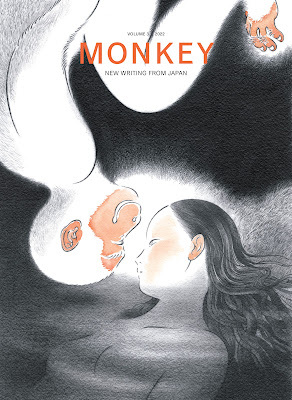Roland Kelts's Blog, page 6
May 11, 2023
A bold new international animation festival launches in Niigata! My take for The Japan Times
Where Otomo (Akira), Oshii (Ghost in the Shell) and Watanabe (Cowboy Bebop) show up in the same small venue in the same small city on the Sea of Japan--and magic happenstances. What a great new festival.
New Niigata film festival brings out the big names in anime Roland Kelts JAPAN TIMES column CULTURE SMASH
Roland Kelts JAPAN TIMES column CULTURE SMASHIt’s no secret that Japan loves animation. Despite being a marginalized medium elsewhere, animation in Japan regularly tops the domestic box office, earning billions of yen for films made without movie stars and on relatively low budgets. Of Japan’s 10 highest-grossing movies ever, seven are animated.
But there’s a hitch: six of those top seven titles are homegrown. Animation produced elsewhere, aside from the occasional old-school Disney blockbuster like “Frozen,” rarely gets seen in Japan, let alone embraced by moviegoers. Like short-grain white rice and unagi (freshwater eels), when it comes to animation, most Japanese prefer their own — and there’s plenty of it.
So when I got my invitation to the inaugural Niigata International Animation Film Festival (NIAFF) in the mail last month, I was confused. Was it a showcase of Japan-produced anime for an international audience? And instead of Niigata, did they mean to write Nagoya, where attendees could sample the wonders of animation genius Hayao Miyazaki at Ghibli Park, less than an hour from town? Or did they mean Nagano, with its tourist-ready snow monkeys and ski resorts?
In fact, the festival really was in Niigata, a mid-sized northern port city on the Sea of Japan, and its program was broadly international in scope, showcasing 50 films from 16 countries over six consecutive days, from March 17 to 22.
None of this was an accident, according to festival co-founder and program director Tadashi Sudo.
“Niigata is actually an ideal location,” he says. “In Tokyo and Osaka, film festivals are less prominent, but in Niigata, they attract attention. It’s only two hours from Tokyo and close to many Asian hub cities, and has been home to some major anime artists and staff.”
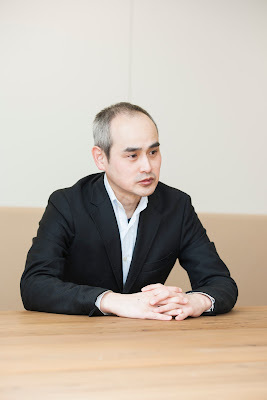 Tadashi Sudo
Tadashi SudoWhile Niigata may not be the first stop for tourists on anime pilgrimages, the city was the birthplace of both Hiroshi Okawa, founder of pioneering industry giant Toei Animation, and manga master Rumiko Takahashi (“Urusei Yatsura,” “Inuyasha”). Today it boasts an anime and manga museum and festival, several art and production schools, and a satellite studio for the renowned Tokyo-based animation company Production I.G.Sudo says NIAFF’s goal is not to promote Japanese intellectual property but to highlight global diversity in animation.“We want more countries and regions, more themes, and a wide range of genres and border-crossing art,” he says.
Feature-length films are also a hallmark of NIAFF, which is now the largest annual festival in Asia devoted to the long form (versus animated shorts). The 2023 lineup included entries spanning Brazil to the Netherlands to China in a dazzling variety of formats (CG, 2D, rotoscoping and stop-motion animation) that often rendered dark stories in culturally rooted environs.
Not all of the overseas filmmakers invited to the festival made it to Niigata this year, but the dozen or so on hand responded enthusiastically. Japan’s reputation as a leader in animation commanded ample respect.
Algerian director Khaled Chiheb, visiting Japan for the first time, presented his and his native country’s first-ever full-length animated film, “Khamsa: The Well of Oblivion,” an eerie and poetic story about the retrieval of memory from the subterranean shadows of history and war. “Khamsa” was among 10 films in competition and won the Kabuku Award (given to a film “that is not constrained by conventional values but challenges and creates something novel and innovative”) for its successful use of unorthodox techniques: simplified paper cut-out character designs set against talismanic 3D background imagery, its rich symbolism drawn from North African folklore.
The award was handed to Chiheb by jury chairman Mamoru Oshii, the celebrated director of anime classic “Ghost in the Shell.”
 Mamoru Oshii
Mamoru Oshii“I admit that the idea of meeting Oshii made me a little nervous,” says Chiheb. “One of the main inspirations for ‘Khamsa’ was his first film, ‘Angel’s Egg.’ But what made me most proud was when he said that he found the minimalist character design of ‘Khamsa’ interesting, and that he saw himself using characters in this style in his future films. In my eyes, that may have more value than the award.”
The wide array of visual effects and subject matter alike suggested that wherever it is created, animation has become an ideal medium for addressing complex biographical, historical, geopolitical and literary narratives.
Pierre Foldes’ “Blind Willow, Sleeping Woman,” winner of the NIAFF grand prix, strings together six short stories by novelist Haruki Murakami into a haunting and deeply moving portrait of urban anomie and suspended lives. Like many festival entries, the film looks like nothing I’ve ever seen before, mimicking facial expressions with unnerving specificity while conveying through stark outlines and strategic blurs the vague, untethered realities of our heavily mediated modern world.
 "Blind Willow, Sleeping Woman"
"Blind Willow, Sleeping Woman"Foldes, a director, painter and composer who was raised in France, couldn’t attend this year’s NIAFF but has spent enough time in Japan to sketch its backgrounds acutely. He says that apart from his father, computer animation pioneer Peter Foldes, all of his chief influences in animation are Japanese artists.
“It’s a great honor to receive such a prize, especially in Japan where animation has been brought to an extremely high level of expression,” he tells me from New York, where he is overseeing the film’s North American opening. “My references in animation are all Japanese. The fact that I adapted an amazing Japanese author could be seen as quite challenging for someone coming from another culture, so I’m very happy that the great Oshii as well as the other members of the jury appreciated my work.”
 Prize-winning international directors with Oshii in Niigata.
Prize-winning international directors with Oshii in Niigata.While its focus was on overseas talent, the first year of NIAFF was hardly lacking in local appeal. Big-screen showings of global box-office hits like “Demon Slayer: Kimetsu no Yaiba the Movie — Mugen Train” and “Jujutsu Kaisen 0,” and art-house triumphs “Inu-Oh” and “In This Corner of the World” were accompanied by retrospective programs featuring the works of Makoto Shinkai (“Your Name.,” “Suzume”) and Katsuhiro Otomo (“Akira”). The return of octogenarian Japanese director Rintaro after a 14-year hiatus was highlighted by a special screening of his short film “Nezumikozo Jirokichi,” a tribute to late movie director Sadao Yamanaka.


 Otomo (Akira), Watanabe (Cowboy Bebop), Ohshii (GiTS)
Otomo (Akira), Watanabe (Cowboy Bebop), Ohshii (GiTS)But the festival’s biggest coup may have been its in-the-flesh guests. Oshii, Otomo and Shinichiro Watanabe (“Cowboy Bebop”), a trio of anime heavyweights, all appeared onstage and casually strolled the hallways of Niigata’s intimate, uncrowded venues, easily accessible and happy to chat with passersby. It’s hard to imagine all three showing up in person at the same event anywhere else. Eat your heart out, Tokyo and Osaka.
May 2, 2023
Video of the FCCJ Tokyo presentation Anime meets Hollywood: "The Art of Blade Runner: Black Lotus" with author Roland Kelts and producer Joseph Chou

May 1, 2023
JAPANAMERICA reader Fintan, 17, on what makes "Chainsaw Man" unique and the genius of MAPPA director Kikunosuke Toya
Hello everyone, I’m Fintan. I’m a high schooler in NYC and Roland was nice enough to let me make a contribution to the blog! This is a big topic and will take more than one posting, so I look forward to sharing more of my thoughts in future posts.
Anime and Manga have become increasingly popular in recent years, predominantly outside of Japan. From the perspective of an American teenager, I want to write about what I think it is that makes the medium so widely consumed.

With "Chainsaw Man" having recently been adapted into its own anime, I thought it would be a good idea to talk about what makes it stand out from other shonen series. I often see people comparing "Chainsaw Man" to "Jujutsu Kaisen," as both are the most recently produced projects from MAPPA. "Chainsaw Man" has its fair share of classic shonen tropes: the main character being half human, half devil, a timid and “emo” best friend, and a sort of training arc at the beginning of the series.
However, "Chainsaw Man" is much more unique than viewers may assume based on the 11 episodes we have so far. Without spoilers, I can say that "Chainsaw Man" is one nonstop ride of almost constant stimulation. Something is always going on that will keep your attention, and you barely have time to process what’s happening before the plot moves onto the next important moment.
All "Chainsaw Man" manga can be read in almost a day, having many double page spreads and few words of dialogue across chapters. If you want to get ahead in the series before season 1 wraps up, I completely support the idea, but fair warning: be prepared to have a LOT thrown at you with little to no time to process.

Personally, I'm happy with how MAPPA has been adapting "Chainsaw Man." We need to take into consideration how many other projects they're working on at the moment, and appreciate that we're even getting a "Chainsaw Man" anime at all.
As far as the directing choices go, I'm also satisfied. It's hard to capture the story's fast-paced nature and turn it into 22-minute long episodes, but MAPPA has done a good job at moving it along at a reasonably comparable pace. The criticism of Kikunosuke Toya is also unjust in my opinion. He does an excellent job capturing Denji's unhinged personality, especially in scenes where he cackles and screams during a fight.
While I agree that some of the comedy from the manga gets lost in the anime, I feel that the overall nature and themes of "Chainsaw Man" have been well adapted, and that Tatsuki Fujimoto's intentions with the series haven't been lost.
February 20, 2023
Japanese IP prominent in the world's top 25 highest-grossing media franchises
February 15, 2023
Live & Virtual Event Feb 21: Anime Meets Hollywood & "The Art of Blade Runner: Black Lotus" at the FCCJ Japan in Tokyo
I'm honored and chuffed to be returning to the nearly 80 year-old Foreign Correspondents' Club of Japan, this time in their swanky new Marunouchi digs, to talk about the rising convergence of Anime & Hollywood and my new book, "The Art Blade Runner: Black Lotus," out now from Titan Books and Penguin Random House.
I'll be joined by veteran film and animation producer Joseph Chou (The Animatrix, Halo Legends, Space Pirate Captain Harlock, Ghost in the Shell: SAC_2045, Appleseed, Ultraman, and the forthcoming Lord of the Rings anime) for a multimedia presentation rife with making-of clips, sketches and insider reveals.
Print copies will be on sale for signings, and I've just learned that we will also have copies of Monkey: New Writing from Japan, the annual English-language Japanese literary journal to which I am a humble contributing editor, bowing to my dear friend, author, scholar, translator, renaissance genius, Motoyuki Shibata, who will be on hand at our event.
If you're keen and can spare the time, please join us either live in Tokyo or worldwide via Zoom by registering in a few minutes here.
https://www.fccj.or.jp/event/book-bre...

<<The Hollywood Reporter calls Japanese animation (anime) “the world’s most bankable and Covid-resistant form of popular entertainment.”
Okay, but what’s behind anime’s explosive global appeal, and why is Hollywood suddenly so invested? Now Japan’s premier export, anime reaches massive audiences worldwide through streaming services and box office hits like “Demon Slayer” and “One Piece Film Red," and the domestic industry is reaping record-breaking profits.
In his new book, The Art of Blade Runner: Black Lotus , author Roland Kelts takes us behind the scenes of the first-ever anime series in the landmark Hollywood Blade Runner franchise. We learn how modern anime is made and get an inside look at the burgeoning exchanges between international and Japanese artists.
Director Ridley Scott’s classic 1982 live-action “Blade Runner” is set in a futuristic Los Angeles with several nods to Japan’s language and culture, including the now-iconic image of a geisha popping a pill on a giant skyscraper video screen. A generation of Japanese artists was shaped by the original film’s aesthetics and would go on to create anime masterpieces such as “Akira,” “Ghost in the Shell” and “Cowboy Bebop” — titles so successful they have recently been remade in Hollywood.
Kelts is an award-winning Japanese-American journalist who has written for The New York Times, The New Yorker, The Guardian and others, and is the author of . He is also a visiting professor at Waseda University and an editor of the annual literary magazine, Monkey: New Writing from Japan .
Kelts will use his new book for a multimedia presentation on how anime is made in 2023, the intensifying relationship between Hollywood and anime, and the role of streaming media in making anime the most prized content in the world during the pandemic--and the core of Japan’s "soft power" appeal. He will be joined by veteran producer Joseph Chou, founder and CEO of Sola Digital Arts Inc., the Tokyo-based studio that created “Blade Runner: Black Lotus,” “Ghost in the Shell SAC 2045” and “Ultraman,” among others.
Doors open at 6:00 pm. Dinner is served from 6:15 pm. The presentation starts from 7:15 pm.
Menu: Chef's Salad/ Lamb Stewed in Tomato, Navarin Style/ Strawberry Mousse with Italian Meringue/ Coffee or Tea with One Drink. Book Break charges are 3,000 yen/ 4,000 yen (members/ non-members) per person.
FCCJ members can sign up at the reception desk. Reservations cancelled less than 72 hours in advance will be charged in full. Non-members can reserve at the reception desk by email (front@fccj.or.jp). Payment is in advance till Friday, February 17th, 2023. No refund is available unless the event is cancelled by FCCJ.
Online attendance (via Zoom) is available at 550 yen per person. Please indicate the intention to attend online when signing up. Details on how to join online will be sent to individual emails after their reservations are confirmed.
Attendees with food restriction should inform the reception desk (front@fccj.or.jp) three days before the event.
We kindly ask for your cooperation with Covid-19 prevention measures at the reception and to wear a mask in the premises. Thank you.
(The talk will be in English)
Library, Archives & Workroom Committee>>
February 8, 2023
Letters from Tokyo, December 2022-January 2023: "When the Colonel is a Claus" for The Japan Society of Boston
Letters from Tokyo by Roland Kelts, December - January: When the Colonel is a Claus
The latest in my "Letters from Tokyo" series for the Japan Society of Boston looks back at my holiday seasons in Osaka, New York and Tokyo, and forward to the state of Japan today. Asian tourists are back and residents are out and about, still masked but less anxious. The pandemic has taken a toll on rural onsen-mura villages, where darkened streets and shuttered storefronts are sad reminders of what's been lost. What's been found? Inflated prices and deflated birth rates mark mid-winter in Tokyo, 2023.

I rode out my first Christmas in Japan alone, far from the US mania of gifting and parties and family. I thought it would be ideal. Sequestered in my narrow danchi apartment with time to write, read, reflect and phone home through the operators at KDDI—which sometimes felt like risking collect calls from prison: Would my family accept the charges?
Through my front door I had an unobstructed view of the Yodogawa River snaking through north Osaka. From my balcony, the Umeda skyline stretching south. I’d just stare at both until it was over.
Instead I found myself sitting cross-legged on tatami watching a line of chorus girls in mini-skirts on my tiny TV. The Rockettes they were not, but they high-kicked a storm and flashed a lot of leg, and I stared at the jump-cuts with creeping loneliness. The Irish whiskey I’d been gifted by a neighbor didn’t help.
It was Christmas Eve in Japan. Time for romance, dinner dates, maybe more. But I’d missed that memo.
I’ve come a long way since: 250 miles northeast to central Tokyo. My holiday flights to the US have tapered off and we have VoIP and Zoom to bridge the distance for less than pennies. To me, Christmas now happens in Japan, with convenience store jingles, KFC promos, illuminations and gently romantic TV come-ons. I’ve come to love a displacement that now feels normal: At the end and beginning of each year, Tokyo and New York trade temperaments.

On and after Christmas, New York goes quasi-dormant for days. City dwellers with family elsewhere leave town while natives snooze through dark afternoons. Overnight, the snow falling through lamplight shafts becomes minefields of curbside mush.
But Christmas in Tokyo sees bars and restaurants overstuffed and hotels booked, many of them short-stay “Love Hotels.” The holiday hits amid year-end party (bonnenkai) season so reveling has plenty of rationale. Until December 26th, Tokyo’s illuminated pedestrian walkways and avenues glisten with LEDs—especially notable this year because people were back to take them in.
The cities switch-hit for the New Year: New York goes wild, Tokyo gets sleepy.
Tourism to Japan doubled this past November, and by December, when academics and kids started vacationing, it felt like everyone was here, back-and-forthing mainly between Tokyo and Kyoto and a few points in between (Kamakura and the newly opened Ghibli Park in Aichi topped lists).
Even in the warrens of Shinjuku’s cheeky Golden Gai, where some bars have a reputation for being exclusive and standoffish toward outsiders, multi-lingual signage beckoned passersby to take a seat, whatever their nationality.
“We invite anyone who can drink!” one owner boasted to me, clearly sampling his own wares.
Even more noticeable was the return of domestic tourists to Tokyo’s streets, most of them masked but less tentative, shopping, dining out, and getting selfies with those LEDs. This despite the fact that case counts were rising in December, and a couple of close friends were among the stricken.
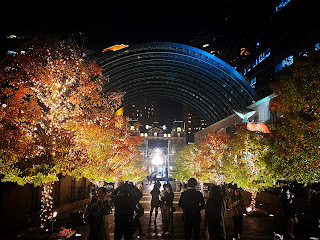
We decided to get out of town and decamp to our usual onsen in Izu, where domestic tourists were definitely not. In fact, the town felt deserted, our inn hosting only a couple of other couples and, for one night, a small family. On the main street through town, straggly Christmas lights were strung up over the front door of a karaoke pub, but usually vibrant pachinko parlors and some of the smaller local restaurants were shuttered.
Walking down the now darker sidewalk at night, it was hard to imagine how any of those venues survived two-plus years of pandemic.
Nearby, at the peak of Mount Katsuragi, Japanese was the minority language. Instead, visitors from other parts of Asia took in the pristine view of Mount Fuji sloping into Suruga Bay, hiked through the forest and lounged at the footbath and immaculate café. Like our inn, the park and its facilities had clearly been upgraded over the downtime, and like Golden Gai, it now boasted multilingual signs and staff speaking English, or at least trying to, and looked brighter, cleaner, spruced up. After our desultory nighttime strolls through town, such revamps were encouraging.
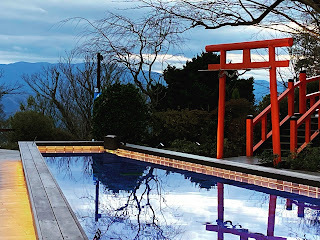
For Christmas itself we roasted a whole chicken sourced from Kagoshima. It was excellent. Once upon a time it was impossible to find turkey in Tokyo, according to KFC lore, hence the fried chicken bonanza. But now you can easily find heaps of frozen turkey at any of the specialty foreign food shops in the city.
Problem is: you need to have an oven big enough for the bird, and enough people on hand to consume it.
A juicy, seasoned roast chicken or Cornish game hen has become my preferred Christmas substitute, and sides like stuffing, potatoes, vegetables and cranberry sauce are also easy to buy seasonally in Tokyo. Besides which, in Japan, the real feast begins just a week later for the New Year’s celebration, a string of days when soba noodles, pre-prepped delicacies (osechi ryori), mochi rice cakes, sweet beans, roast beef and crab legs fill the bill. There isn't any room for leftover turkey sandwiches.


2023 is the Year of the Rabbit, but the unsurprising news this January is that Japan is not behaving bunny-ish, at least not procreatively. Another record-low birth rate prompted otherwise bland and reserved PM Kishida to warn that the nation could cease to function without more babies. Childless myself, I sympathize with young parents even more now that inflation has seeped into my local supermarket.
While Tokyo remains a bargain compared to US cities like New York and San Francisco, prices here have spiked over the past few months, especially for fruit, vegetables and other fresh goods, and so-called ‘shrinkflation’ has arrived despite retailer reluctance: four pieces of sushi now cost ¥100 more than six pieces did in October. The pinch is minor for people like me, but when I see mothers in the checkout aisle watching the register with widening eyes and narrowing brows, I worry for them.
After one of the sunniest, mildest winters I’ve ever had in Tokyo, perfect walking weather, temperatures tanked at the end of January. Like a fool, I'm now flying to frigid New York for a film shoot, trading temperaments and temperatures at one of the coldest times of the year. But at least I won't be alone.
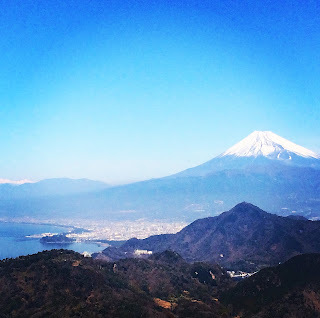
January 15, 2023
My interview on THE ART OF BLADE RUNNER: BLACK LOTUS for "Deep In Japan"
My thanks to Jeff Krueger, who always sounds great: Deep in Japan with Roland Kelts on The Art of Blade Runner Black Lotus (and Much More)
December 30, 2022
My take on the year in anime for The Japan Times
So long, 2022. You've been quite the year for anime...
Anime continued its dominance in 2022
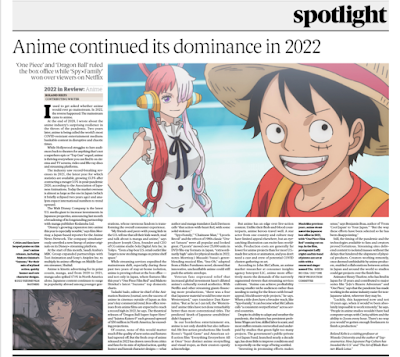
I used to get asked if anime would ever go mainstream. In 2022, the reverse happened: The mainstream came to anime.
At the end of 2020, I wrote about the anime industry’s surprising resilience in the throes of the pandemic. Two years later, anime is being called the world’s most COVID-resistant entertainment medium: bankable content in disruptive and chaotic times.
While Hollywood struggles to lure audiences back to theaters for anything that’s not a superhero epic or “Top Gun” sequel, anime is thriving everywhere you can find it: on cinema and TV screens, video and Blu-ray discs and streaming platforms.
The industry saw record-breaking revenues in 2021, the most recent year for which statistics are available, growing 13.3% after contracting a meager 3.5% in peak-pandemic 2020, according to the Association of Japanese Animations. Today the market overseas is almost as large as the one in Japan (which it briefly eclipsed two years ago) and analysts expect international numbers to trend upward.
The Walt Disney Company is the latest U.S. media giant to increase investments in Japanese properties, announcing last month a broadening of its longstanding partnership with manga publisher Kodansha Ltd.
“Disney’s growing expansion into anime this year is especially notable,” says Kim Morrissy, a Japan-based reporter for the Anime News Network. The company simultaneously unveiled a new lineup of anime originals on its Disney+ streaming platform.
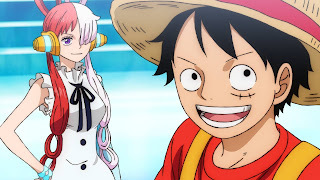 Much like previous years, anime dominated the Japanese box office in 2022, with “One Piece Film Red” coming out on top. In the film, protagonist Luffy (right) and his band of pirates are set at odds with a renowned singer named Uta. | © EIICHIRO ODA / 2022 “ONE PIECE" PRODUCTION COMMITTEE
Much like previous years, anime dominated the Japanese box office in 2022, with “One Piece Film Red” coming out on top. In the film, protagonist Luffy (right) and his band of pirates are set at odds with a renowned singer named Uta. | © EIICHIRO ODA / 2022 “ONE PIECE" PRODUCTION COMMITTEEAt the start of this month, Saudi Arabia’s MBC Group expanded partnerships with Toei Animation and Sony’s Aniplex Inc. to multiply its anime offerings on Middle Eastern streamer, Shahid.
Anime is kinetic advertising for its print cousin, manga, and from 2020 to 2021, manga sales spiked 171% in North America alone. Japanese content continues to surge in popularity abroad among younger generations, whose ravenous fandom is transforming the overall consumer experience.
“My friends and peers with young kids in the U.S. tell me that all their kids watch, read and talk about is manga and anime,” says producer Joseph Chou, founder and CEO of CG anime studio Sola Digital Arts Inc. in Tokyo. “Even a big-box U.S. retail outlet like Target is now stocking manga on prime shelf space.”
While streaming services expedited the mainstream shift, especially during these past two years of stay-at-home isolation, anime is proving robust at the box office — and not only in Japan, where features like this year’s “One Piece Film Red” and Makoto Shinkai’s latest “Suzume” top domestic charts.
Tadashi Sudo, editor-in-chief of the Animation Business Journal, sees the success of anime in cinemas outside of Japan as this year’s key commercial trend. Box-office revenues from anime films are expected to reach a record high in 2022, he says. The theatrical releases of “Dragon Ball Super: Super Hero” and “Jujutsu Kaisen 0” each grossed upward of $30 million in North America, far exceeding projections.
Of course, none of this would matter much if the quality of new series and features had tapered off. But the fresh crop of anime released in 2022 has drawn raves from critics and fans for its mix of stylized action, quirky humor and kawaii character designs — what author and manga translator Zack Davisson calls “that action-with-heart feel, with some solid violence.”
“Spy×Family,” “Chainsaw Man,” “Lycoris Recoil” and the reboot of 1980s classic “Urusei Yatsura” were all popular and looked great. (“Lycoris” moved over 23,000 units in DVD/Blu-ray formats in Japan, “extraordinarily high” sales for physical media in 2022, notes Morrissy.) Masaaki Yuasa’s genre-blending musical film, “Inu-Oh,” adapted from a Hideo Furukawa novel, showed that innovative, unclassifiable anime could still push the artistic envelope.
Veteran fans expressed relief that increased global investment hasn’t diluted anime’s culturally rooted aesthetics. With Netflix and other streaming giants financing more productions, “there was a fear that Japanese material would become more Westernized,” says translator Dan Kanemitsu. “But as far as I can tell, the ‘Westernized’ anime titles have not done remarkably better than more conventional titles. The predicted ‘death of Japanese sensibilities’ didn’t happen.”
In our borderless entertainment era, anime is not only durable but also influential. Hit live-action productions like South Korea’s “Squid Game” and American sci-fi action film “Everything Everywhere All at Once” bear distinct anime storytelling and visual tropes, as their creators openly acknowledge.
 Makoto Shinkai's "Suzume" tops the Japanese box office.
Makoto Shinkai's "Suzume" tops the Japanese box office.But anime has an edge over live-action content. Unlike their flesh-and-blood counterparts, anime heroes travel well. A star actor from one country and culture may have limited appeal elsewhere, but an eye-catching illustration can excite fans worldwide. Production costs are generally far lower for anime projects than for most U.S.-made live action or animation, and you don’t need a cast and crew of potential COVID clusters gathering on set.
According to John McCallum, an anime market researcher at consumer insights agency Interpret LLC, anime more effectively meets the demands of the narrowly segmented viewers that streaming services cultivate. “Anime can achieve profitability among smaller niche audiences rather than needing to swing for the fences with broad-appeal, blockbuster-style projects,” he says. When a title does have a broader reach, like “Spy×Family,” it can become what McCallum calls “a consistent overperformer” across several countries.
Despite its ability to adapt and weather the pandemic, the industry has persistent problems: Wages are low, skilled labor is scant, and most staffers remain overworked and underpaid by studios that green-light too many projects. The government’s public-private Cool Japan Fund, launched nearly a decade ago, has done little to improve conditions and is reportedly on the verge of being scuttled.
 "Spy x Family" reached audiences across several countries and demographics.
"Spy x Family" reached audiences across several countries and demographics.“Investing in promising efforts makes sense,” says Benjamin Boas, author of “From ‘Cool Japan’ to ‘Your Japan.’” “But the way these efforts have been selected so far has been disappointing.”
Still, the timing of the pandemic and the technologies available to fans and creators proved fortuitous. Streaming sites delivered content to isolated masses without the delays that hindered the shipment of physical products. Creators working remotely, once deemed unthinkable by anime producers, enabled collaborations between artists in Japan and around the world so studios could get projects over the finish line.
Animator Henry Thurlow, who has lived in Japan for 13 years and contributed to major series like “JoJo’s Bizarre Adventure” and “One Piece,” says that the pandemic has made working in the anime industry easier for non-Japanese talent, wherever they may be.
“Luckily, this happened now and not 10 years ago, when it would’ve been absolutely impossible to work remotely,” he says. “People in anime studios wouldn’t have had computer setups with Cintiq tablets and the ability to Zoom every hour. There’s no way you would’ve gotten enough freelancers to finish a production.”
December 18, 2022
Here for the Holidays, my latest little big art book: The Art of Blade Runner: Black Lotus
Okay, here goes the new book, out now worldwide from Penguin Random House and Titan Books. I'm no good at this launch stuff but I can assure you the book is beautiful. Just got big boxes of it here in Tokyo:
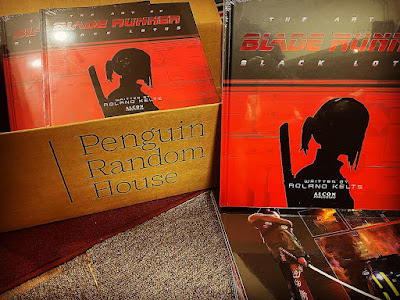
So what's it about? I wrote a preview of it in one of my monthly columns for The Japan Times.
"British director Ridley Scott’s 1982 original 'Blade Runner,' a Hollywood live-action movie set in a futuristic Los Angeles, features several neo-noirish nods to a dystopian urban Japan. Signs in Japanese flash above neon-lit alleyways lined with cramped standing food stalls. Snatches of Japanese dialogue are heard on the streets and from the radio in Los Angeles police officer Gaff’s hovercraft (the brilliantly designed “spinner”), and in the voiceover accompanying an indelible image of a geisha, popping a pill on a gigantic skyscraper video projection.Even today, seeing Japanese culture embedded so deeply in the mise-en-scene of a mainstream Hollywood film is startling. In 1982, it must’ve been revolutionary.
It certainly didn’t go unnoticed in Japan. While initially “Blade Runner” was not a box-office hit on either side of the Pacific, it was revered by those who understood its heady blend of sleek high-tech environs with low and grimy street culture, a visual icon of the emerging cyberpunk sci-fi subgenre.
Over time, “Blade Runner” was tagged as a “cult classic.” And oh, what a cult it was, particularly in Japan.
A generation of anime artists was shaped by the film’s daring and gritty aesthetic, and would go on to create some of Japan’s consecrated anime classics such as “Akira,” “Ghost in the Shell” and “Cowboy Bebop” — titles that are now so popular and renowned that they have been or are being remade in Hollywood. Talk about circles.
“Akira” director Katsuhiko Otomo and “Ghost in the Shell” director Mamoru Oshii have both cited “Blade Runner” as a key source of inspiration for their conceptual designs, and “Cowboy Bebop” creator Shinichiro Watanabe has seen Scott’s film over 20 times.
“It was the feel of the world in ‘Blade Runner’ that surprised me the most,” Watanabe says, commenting on the film’s mix of futuristic surrealism and grim urbanism. “With ‘Star Wars,’ the story takes place in a world different from where we actually live. But ‘Blade Runner’ takes place in our reality, and the visual design is so cool in every scene.”
Hope you like the little big book!
 courtesy Jeff Krueger
courtesy Jeff KruegerDecember 8, 2022
Letters from Tokyo, November 2022: "Visiting Chestnutville in Nagano" for The Japan Society of Boston
Letters from Tokyo November 2022: Visiting Chestnutville in Nagano
The latest in my "Letters from Tokyo" series for the Japan Society of Boston recounts a recent tour of Nagano to meet the 21st Century descendants of Nakahama (John) Manjiro, Commodore Matthew Perry and Captain William Whitfield, key 19th Century figures in the origins of Japan-US relations. To join the families as they reunited over 180 years later in Japan was an astonishment; learning more about their intertwined histories remains fascinating.
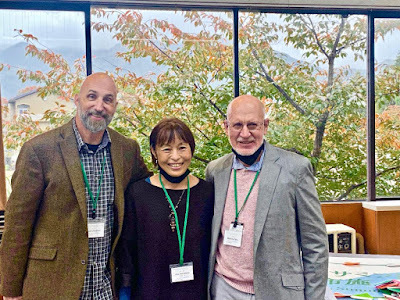 Scott Whitfield, Aya Nakahama, Matt Perry
Scott Whitfield, Aya Nakahama, Matt PerryWe met in the storybook village of Obuse, famed for delicious chestnuts, miso, sake and heaps of locally grown fruit and veggies. We also toured the Hokusai Museum, housing rare works by Japan's most famous woodblock print (ukiyo-e) artist, Katsushika Hokusai. I wrote about all of that, too.
 Kamameshi w/chestnut
Kamameshi w/chestnutAt the start of November we found ourselves on a bus bound for Obuse, a tiny village spanning seven square miles with a population of roughly 11,000, tucked between a river and a mountain in Nagano Prefecture, northwest of Tokyo.
There are plenty of stories about the hollowing out of Japan’s countryside. With its population declining and aging, Japan’s big cities alone hold the allure of opportunity (jobs and a social life) for the young. You don't have to travel far past Tokyo’s urban edges to find the vacant homes and shuttered schools of rural Japan, where many dilapidated towns host mostly the aged, and fewer of them each year.
But Obuse is not one of those towns. Each year Obuse welcomes over a million tourists and is well prepared to greet them, boasting a storybook elegance right down to its manicured floral gardens and sidewalks made from the wood of chestnut trees. No kidding. Chestnuts are a big deal in Obuse, served up in just about every manner imaginable except the one I'm used to in New York: shoveled into paper sacks from smoky street carts.
 Cobblenuts: chestnut-tree sidewalks
Cobblenuts: chestnut-tree sidewalksChestnuts go especially well with rice—good rice—like the kamameshi bento we were served for lunch on the bus north.
It wasn’t just any old bus. We were there at the behest of dear friend Peter Grilli, who connected us to the John Manjiro Whitfield Commemorative Center for International Exchange. I realize that’s a mouthful, but it helps explain the nature of the venture.
Since 1991, the Manjiro-Whitfield Center has held an annual Grassroots Summit for Japanese and American citizens, alternating between locations in Japan and the US to celebrate a historic encounter.
In 1841, a shipwrecked 14 year-old Nakahama (John) Manjiro was rescued by American whaling Captain William Whitfield and taken to Massachusetts, where he studied for ten years. Manjiro is widely considered the first Japanese immigrant to the US.
After he returned to Japan via the California Gold Rush (!) in 1851, Manjiro helped pry open the Tokugawa shogunate’s isolationist policy ahead of US Commodore Matthew Perry’s arrival in 1853.
Among the Americans on our bus to Nagano were descendants of Captain Whitfield and Commodore Perry. In Obuse, we met one of Nakahama Manjiro’s lineage.
There was more history to be had: Tours of miso and sake breweries, both over 200 years old, a tea ceremony and a visit to the Hokusai museum, commemorating the years Japan’s most famous woodblock print (ukiyo-e) artist spent visiting a patron and working in Obuse in the 19th century. A night at a local hot springs inn and a foliage-viewing pit stop at Mirror Pond (Kagami ike) in the Togakushi Mountains capped things off. Everywhere we ate excellent soba, a personal favorite and regional specialty.
But Tokyo was calling. My smartphone buzzed with editorial queries throughout.

This month sees the US release of “Monkey: New Writing from Japan, Volume 3,” the literary magazine to which I am a contributing editor, and the publication of my new book, “The Art of Blade Runner: Black Lotus,” penned in pandemic isolation. On the Shinkansen bullet train back to the city I finished final edits on my opinion essay for the New York Times.
You can complain about deadlines if you're a writer, but you can’t ignore them.
